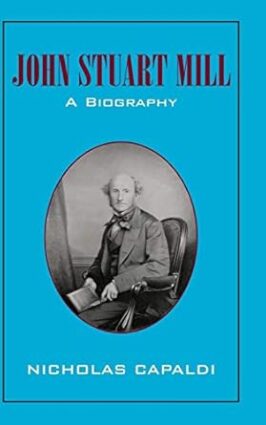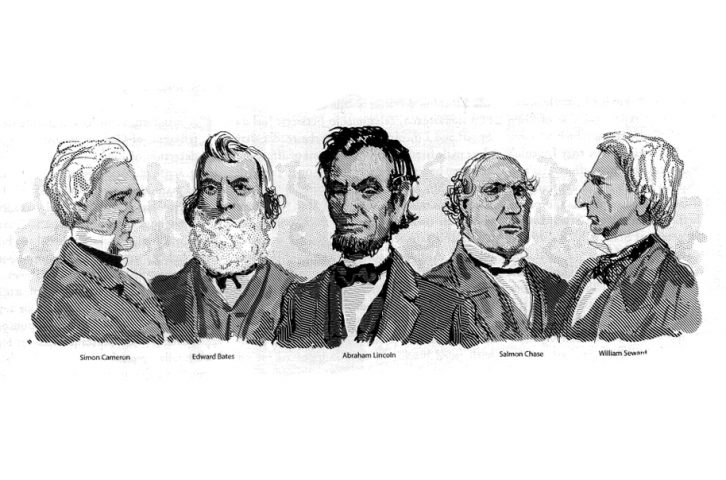Books Reviewed
Liberalism—the moral and political theory of individual liberty, not the progressivist dogmas of the Democratic Party—is for us an established doctrine. Our fights over public policy take place on liberalism’s moral premises and are governed by its political principles. Conservatives and progressives may disagree about which rights are fundamental and about what efforts government must undertake to protect its citizens, but few doubt that all citizens, regardless of religion, race, or sex, are equally endowed with fundamental rights. We can favor more or less government regulation of the economy, but we can’t really question the market’s indispensable role in economic life. We can dispute America’s proper position in the world and its interest in and ability to promote liberty and democracy abroad, but at the end of the day most Americans are pretty well convinced that some form of liberal democracy is best suited to human needs and human dignity.
Actually, John Stuart Mill’s value today is partly connected to the settled state of our convictions. Born in 1806 at a time of transition, he reached adulthood within living memory of the height of the Enlightenment, just after the peak of the Romantic reaction, in the midst of the rise of mass industrial society, and before democratic self-government included the majority of his fellow citizens. As a journalist and magazine editor, student of ideas and cultural critic, and political reformer and member of Parliament, he sought to make England a more free and equal society. Because he had to wrestle with the liberalism we take for granted, his thinking provides us with background, objections, justifications, controversies, and alternatives that we have forgotten or never heard of. And because we live in a particularly angry age, in which too many members of both major parties think that the nation would be better off without the other, Nicholas Capaldi’s intellectual biography of Mill is especially timely. Among its many virtues, Capaldi’s book demonstrates the way Mill’s thinking drew insight from competing perspectives, and makes vivid his reasons for believing that a nation devoted to individual freedom must welcome and remain hospitable to rival partisan principles.
Another merit of John Stuart Mill: A Biography is the way Capaldi, the Legendre-Soulé Distinguished Chair in Business Ethics at New Orleans’s Loyola University, connects the extraordinary events of Mill’s life to his extraordinary intellectual achievements. In understanding that life and how it influenced Mill’s thought it is important to keep in mind, as the opening lines of this book state, that “the two most important facts about the life of John Stuart Mill were that he was the son of James Mill and that he fell in love with Harriet Hardy Taylor.”
A severe man who sought to apply his rationalist and utilitarian principles to his son’s education, James Mill famously began teaching Greek to John Stuart when he was three. He had his son reading Plato by age seven, major works of English history by age eight, Newton’s Principia Mathematica by age 11, Adam Smith’s political economy by age 14, and English classics and classical philosophy by 16. This arduous education, Capaldi shows, both provided the foundation of Mill’s own philosophy of individual freedom, and precipitated the breakdown or spiritual crisis he suffered in his early 20s, from which he rescued himself, in significant measure, through the discovery of Romantic poetry and thought.
Mill’s second defining experience began in 1830, when he fell in love with a married woman, the brilliant, beautiful, and vivacious Harriet Taylor. They soon became frequent companions and, during the two decades in which Harriet remained wed to her husband John Taylor, she and Mill went to heroic lengths to maintain the appearance of propriety. Mill and Harriet Taylor married in 1851, not quite two years after John Taylor’s death. Mill’s written tributes to his wife testify to his admiration, devotion, and profound feeling of indebtedness. His lifelong love affair with her awakened him to convention’s capacity to oppress, as well as to the discipline, strength, and energy necessary to achieve romantic fulfillment.
Meanwhile, Mill learned about the capacity of convention to educate at the East India Company, where he began working after his father, chief examiner (the equivalent of a secretary of state) at India House, obtained an appointment for him one day after his 17th birthday. For the next 35 years, he served there, helping manage England’s colonial operation in India, and eventually rising to the position of chief examiner. Perhaps no other great thinker devoted so large a portion of his career to political administration. Mill did not complain or express regret. To the contrary, in his Autobiography he insisted that from his administrative responsibilities he grew to appreciate the character of commercial and political life, and refined his ability to connect theory to practical affairs.
Although Mill’s experience shaped him, it did not define him. Instead, as Capaldi shows by deftly weaving together the biographical with the intellectual, it provided the material and occasion for thought. And think Mill did: in the authoritative scholarly collection of his writings, his words fill 33 large volumes ranging across culture, economics, morality, politics, and religion.
* * *
The first big showdown in his thinking occurred when the Rationalism bequeathed to him by his father clashed with the Romantic critique that had helped John Stuart recover from his breakdown. While editor of the London and Westminister Review, Mill published his own interconnected tributes to the utilitarian rationalist Jeremy Bentham and the conservative Romantic Samuel Taylor Coleridge in 1838 and 1840, respectively, after their deaths. To appreciate the audacity of his contention that the thought of both Bentham and Coleridge was essential for the well-educated person, try to imagine a contemporary left-of-center journal declaring that, say, both John Rawls and Allan Bloom, or Hannah Arendt and Leo Strauss, were indispensable thinkers of the age.
In fact, Mill’s lengthy essays are serious and persuasive. Bentham’s progressive rationalism, he argued, though blind to the intricacies of human affairs—indeed partly because of that blindness—was able to expose much nonsense in the common language used to discuss morals and politics, and to bring into focus inefficiencies and injustices in social and political life. At the same time, Coleridge’s conservative Romanticism, though inadequate by itself to the task of understanding modern society—in part because it casually dismissed systematic empirical study—could concentrate on discerning the wisdom embodied in traditional practices, and on making vivid the social bonds on which political life depended.
On Liberty (1859), which he movingly dedicated to Harriet, who had died the previous year, is often thought to contain Mill’s most extreme, one-sided defense of individual liberty. To sustain this judgment, as Capaldi’s adroit analysis makes clear, it is necessary to isolate a few of Mill’s most dramatic remarks about the strict limits on legitimate state interference with individual liberty. Attention to key features of On Liberty‘s extended argument yields a more balanced picture. These features include Mill’s defense of liberty in terms of “the permanent interests of man as a progressive being”; his exposition of serious thought’s duty to combine and reconcile competing opinions; his insistence that individuality is an achievement that depends on the discipline of great passion; his analysis of the social virtues without which a free society could not function; his subtle account of how government policy may legitimately discourage bad habits that it may not regulate directly; his discussion of education’s importance to a free society and the division of responsibility for it between parents and the state; and his concluding observations about the role that civil society plays in encouraging habits of freedom and responsibility.
Capaldi’s comprehensive and quite readable treatment throws into sharp relief Mill’s consistent appreciation of the need to reconcile competing principles in other critical contexts. For example, in Principles of Political Economy (1848), he sought to give both the free market and government intervention their due. In Considerations on Representative Government (1861), he emphasized the need for both a party of order, which seeks to maintain the basic framework within which political life takes place and to conserve what society has achieved, and a party of progress, which tries to implement more fully the free society’s promise of liberty and equality under law. In The Subjection of Women (1869), he made an impassioned case for the formal equality of women, while respecting differences between the sexes. And in his three Essays on Religion (1874), which Mill chose to have published posthumously, he searched for an expression of religious sensibility that respected the power as well as the limits of reason.
Mill’s combining and reconciling is not always stable, much less satisfying. Overall, he may have overestimated reason’s reach and underestimated modern freedom’s self-subverting tendencies; but thoughtful readers will find in his writings considerable resources for the critique of reason’s conceits and for the building of moral and political checks on freedom’s excesses. Capaldi observes in conclusion that “the practical and intellectual conflicts he tried to resolve are still with us,” and as this book as a whole demonstrates, Mill’s ability to state those conflicts cogently makes his writings an enduring source of illumination.




